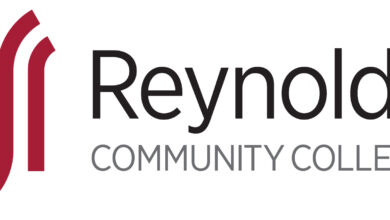
The Future of Virtual Reality and its Transformative Impact on Everyday Life
In the rapidly advancing landscape of technology, virtual reality (VR) has emerged as a groundbreaking innovation, poised to revolutionize the way we experience and interact with the world around us. As we delve into the future, the integration of virtual reality into our daily lives promises to bring about transformative changes across various sectors, offering immersive experiences that go beyond entertainment. This article explores the potential of virtual reality and its anticipated impact on everyday life.
Understanding Virtual Reality:
Virtual Reality refers to a computer-generated environment that simulates a realistic experience, engaging the senses of sight, sound, and sometimes touch. While VR has long been associated with gaming and entertainment, recent developments have expanded its application to diverse fields such as healthcare, education, business, and social interaction.
Entertainment and Gaming
The entertainment industry has been a pioneer in adopting Virtual Reality technology. VR gaming, in particular, has taken the gaming experience to unprecedented heights. Gamers can now step into a virtual world, fully immersing themselves in a three-dimensional environment that responds to their movements and actions. The future promises even more realistic graphics, enhanced interactivity, and a broader range of gaming genres that leverage the immersive potential of VR.
Beyond gaming, Virtual Reality has started to reshape how we consume other forms of entertainment. Virtual concerts allow music enthusiasts to attend live performances from the comfort of their homes, breaking down geographical barriers. Similarly, VR cinemas provide a unique and immersive way to experience movies, placing viewers amid the action.
Education and Training
One of the most promising areas of growth for Virtual Reality lies in education and training. VR simulations offer a safe and realistic environment for learners to practice and refine their skills. From medical students performing virtual surgeries to aviation trainees navigating simulated flights, the applications are vast. This technology enables experiential learning, allowing individuals to gain practical experience without real-world consequences.
In classrooms, Virtual Reality can transport students to historical events, outer space, or even microscopic environments, making learning more engaging and memorable. As VR hardware becomes more accessible, we can expect an increased integration of this technology in educational institutions, leveling the playing field and providing diverse learning experiences for students worldwide.
Healthcare and Therapy
The healthcare industry is another domain where Virtual Reality is making significant strides. From pain management to mental health therapy, VR is proving to be a valuable tool. Virtual Reality therapy allows patients to confront and overcome fears, phobias, or post-traumatic stress in a controlled and immersive environment. This technology has the potential to revolutionize mental health treatment by offering personalized and accessible therapeutic experiences.
In physical therapy, VR can aid patients in rehabilitation exercises by creating engaging and interactive routines. Moreover, surgical training using VR simulations enhances the skills of medical professionals, ultimately leading to improved patient outcomes.
Business and Remote Collaboration
The corporate world is embracing Virtual Reality as a means to enhance communication and collaboration. With the rise of remote work, VR offers a solution to the limitations of traditional video conferencing. Virtual meeting spaces allow colleagues to interact in a more immersive and natural manner, fostering a sense of presence and connection that goes beyond what can be achieved through standard video calls.
In addition to virtual meetings, businesses are exploring VR for training programs, product prototyping, and virtual showrooms. VR technology enables employees to collaborate on projects regardless of their physical locations, potentially reshaping the future of remote work and global business interactions.
Social Interaction and Connectivity
As our lives become more intertwined with technology, Virtual Reality is redefining the concept of social interaction. Social VR platforms allow users to meet, interact, and socialize in virtual spaces. Avatars represent users, and activities range from casual conversations to attending virtual events together. This form of interaction has the potential to break down geographical barriers, bringing people together in ways that were previously unimaginable.
The future of social VR may include virtual offices, where colleagues collaborate in shared virtual spaces, or virtual travel experiences that allow friends and family to explore the world together without leaving their homes. The development of more intuitive and natural interfaces will further enhance the sense of presence in virtual interactions.
Challenges and Considerations
While the future of Virtual Reality holds immense promise, some challenges and considerations must be addressed. The cost of high-quality VR hardware, potential health concerns, and the need for robust content creation are among the hurdles that the industry must overcome. Additionally, ethical considerations related to privacy and data security in virtual spaces need careful attention.
As technology advances, developers, policymakers, and the general public must collaborate in establishing ethical guidelines and standards to ensure the responsible and inclusive development of Virtual Reality.
Conclusion
In conclusion, Virtual Reality is on the cusp of transforming everyday life across various domains. From education and healthcare to business and social interaction, the immersive experiences offered by VR have the potential to revolutionize how we perceive and engage with the world. As technology continues to evolve, the integration of Virtual Reality into our daily lives will likely become more seamless, providing us with new and exciting possibilities for the future. While challenges remain, the ongoing innovation in the VR space promises a world where the boundaries between the virtual and the real are increasingly blurred, opening up a realm of opportunities for individuals and societies alike.



